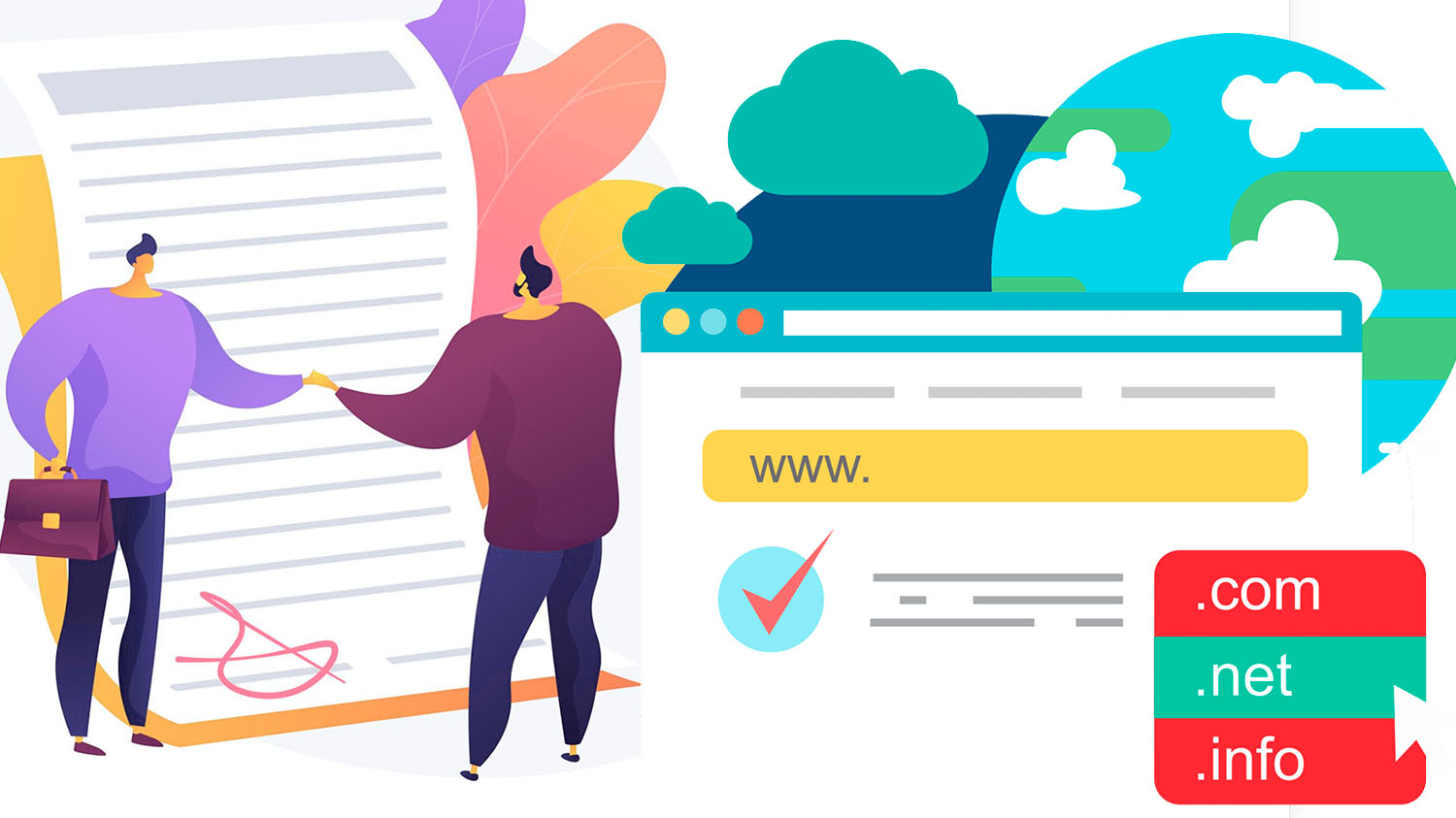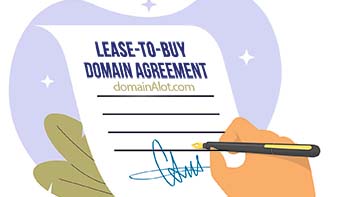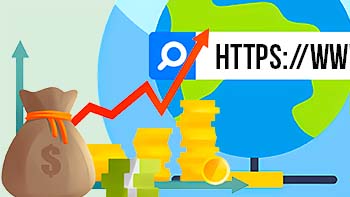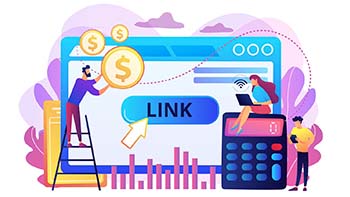Leasing A Premium Domain
Premium domains offer businesses instant visibility and leasing a premium domain is a cost-effective way to achieve ambitions

When people think about premium domain names, they usually imagine the huge prices that sometimes make headlines. It's true that the very best one-word .com domains often sell for hundreds of thousands, even millions of dollars. For many businesses, especially younger ones, that sort of upfront cost isn't realistic no matter how much they want the credibility and visibility that comes with owning a truly memorable domain. This is where leasing has become such an important part of the domain world and where you can leverage the power of a Premium Domain without the associated enormous upfront costs.
Try Before You Buy
Leasing allows a company to take advantage of a premium domain immediately, paying a monthly or annual fee instead of committing to the full purchase price on day one.
In practice, it works very much like leasing a storefront or office space. You get to use the location, build your business around it, and reap the benefits of being in a better and more optimal spot, without the heavy capital investment up front. The landlord, who in this case is the domain owner, keeps legal ownership of the name but gains predictable income which you can equate to rent.
Positive Outcomes
The benefits show up in both directions. Businesses gain access to digital real estate they otherwise couldn't afford, while owners of premium names unlock steady cash flow from an asset that might otherwise sit unused until the right buyer shows up.
In some cases, these leases turn into purchases. A company begins by leasing a name, tests its value in real-world marketing, sees traffic, branding, and sales improve, and then decides the investment is worth making permanent. In other cases, companies lease for years without ever buying, treating the arrangement like a long-term rental that continues to serve their needs.
Taking The Plunge
One of the most cited examples of a lease that turned into a purchase was the case of Candy.com.
The domain was leased in the late 2000s by a confectionery company that wanted to quickly establish a strong online presence. Leasing gave them the chance to operate under the Candy.com name and measure its impact. The domain quickly proved itself as a driver of business and credibility, and eventually the company decided to buy it outright, investing heavily to make the brand fully theirs.
It's a classic illustration of how leasing can de-risk a major purchase. Instead of spending millions up front and hoping the payoff comes, the company could test the waters, validate the brand power of the domain, and only then take the step into full ownership.
Another story often told in the industry is the leasing of Beats.com before Apple acquired the Beats by Dre brand.
The name was leased for use during an early phase of the company's growth. Once Beats exploded into a household brand, the strategic value of fully owning the domain became obvious. What started as a flexible short-term lease arrangement evolved into permanent ownership, securing the name as part of Apple's larger ecosystem, and a reminder that even giants sometimes take advantage of leasing as a stepping stone toward ownership.
The Flexibility You Need
Not every lease ends in ownership, and that's all part of what makes the model so flexible.
Sometimes a business only needs a domain temporarily, whether it's for a campaign, a product launch, or to test market response. In those cases, leasing can give a company all the advantages of a premium domain without forcing a long-term commitment.
One example that comes up frequently in discussions among domain professionals is a company that leased WinterSale.com for a seasonal e-commerce campaign. The domain was perfect for attracting attention during the winter shopping months, and the business saw measurable boosts in traffic and conversions. Once the season ended, however, the company didn't see the need to purchase the name outright. The lease had served its purpose, the campaign had run its course, and the business moved on, knowing it could return to the name if needed in the future.
Another case involves a technology startup that leased SmartHomeTech.com to quickly launch their initial marketing and beta program. The name lent credibility to a new venture, helping them appear established even in a crowded market. Over time, the company realised that their product strategy had shifted as they focused on a different aspect of smart home solutions and no longer needed that exact domain. Because they had opted to lease rather than buy, the transition was simple and painless. They returned the domain at the end of the lease term, without a heavy financial loss or the hassle of trying to sell it.
These examples show why premium domain leasing can be a smart choice, even if the end goal isn't ownership.
Companies can gain immediate brand authority, measure ROI, and retain flexibility.
For many, the ability to secure a premium domain without a massive upfront payment allows them to invest in other parts of the business, experiment with marketing strategies, and react to market shifts without being locked into a single digital asset. The domain essentially becomes a tool—one that can be tried, tested, and returned if it doesn't continue to fit with the company's needs.
Changing Mindset
A great example of a recent campaign that would have benefited hugely from a premium domain lease was impossible.no.
When Adidas relaunched their "Impossible is Nothing" campaign in 2021, the domain impossible.no would have been an ideal, short-term fit for their marketing needs... or so it seemed. However, at the time, the domain owner was unwilling to lease the domain and wanted only to sell the asset. Of course, if a campaign is temporary, there's little to no economic incentive for a company to invest heavily in ownership, but a lot has changed in four years. Today, the owner of impossible.no has now listed the domain for both sale and for lease with us here at domainAlot.com, and is perfectly placed for any company choosing a campaign to challenge the norms of possibility.
Provisions And Security
Naturally, for the domain owner, leasing offers peace of mind.
Rather than leaving a valuable domain idle while waiting for a high-stakes sale, owners can generate revenue and see their asset actively used. While this may seem arbitary, for the domain owner traffic is still an essential component of assessing "domain value."
Maintaining control over the property and being able to set the terms that protect their interests, ensures the domain remains valuable. This is critical for every domain owner because even when a lease doesn't lead to a purchase, both sides should be able to walk away satisfied: the lessee has gained immediate strategic value, and the owner has earned income while keeping the domain available for future opportunities.
Adapt And Pivot
Beyond individual examples, the real value of premium domain leasing becomes clear when you consider the bigger picture. For businesses, a premium domain is more than a name, it's THE first impression, a signal of credibility, and a tool for driving traffic. Leasing gives companies the chance to access these advantages without the burden of a large upfront investment. It allows them to test branding strategies, launch campaigns, and see what resonates with customers before committing to a full purchase. This flexibility can be especially important for startups or companies entering new markets, where every dollar counts and agility can make the difference between success and stagnation.
Lease-To-Own
Another advantage of leasing is the opportunity for lease-to-own arrangements. In these cases, businesses can begin with a lease to test the domain's effectiveness and, if it proves worthwhile, convert the arrangement into a full purchase. This setup creates a win-win scenario where the business mitigates risk while the owner secures a potential sale. Even when a purchase doesn't happen, both parties benefit as the lessee gains strategic use of the domain, and the owner earns income and exposure.
Low Market Entry
One thing that often surprises people is just how accessible premium domains can become through leasing. Names that might otherwise be out of reach financially are suddenly available for a fraction of the purchase price. This accessibility allows businesses to focus on growth, marketing, and customer engagement while still projecting the authority and professionalism that a high-quality domain conveys. Returning to the example of impossible.no, the domain is currently appraised (at time of writing) to be valued at $200,000 (USD), where the domain owner is willing to accept offers of $149,500 (USD) for the sale and transfer of the asset. For most of us, this figure still places the domain far out of reach, however, through leasing, the domain can be used for just $1,125 (USD) per month, which for any short-term campaign means that domain has suddenly become highly-affordable.
In another example, imagine a green tech startup wanting to launch a new service towards environmentally-friendly customers. A domain such as solvergy.com is ideal, but at $14,950 (USD) would be seen as quite an investment and still qualify as a risk without guarantee of service traction. However, through Lease-To-Buy, the domain can be leased for just $112 (USD) per month, offering low-entry and the ability to test the service before potentially committing to ownership. And because leases can be structured in a variety of ways, i.e. short-term, long-term, or with optional purchase, they can be tailored to suit nearly any business strategy or budget.
Considerations
Like any business arrangement, domain leasing works best when it is structured thoughtfully. For a company looking to lease, one of the most important steps is to be clear about goals. Are you using the domain for a short campaign, a market test, or as the foundation of your long-term brand? The answer shapes everything from the length of the lease to whether you should negotiate an option to purchase. A business planning a quick seasonal campaign will want different terms than one intending to build its identity around the domain for years.
A common pitfall for businesses is underestimating how central a domain can become once it is tied to branding and marketing. Leasing a domain can seem like a safe experiment, but once a company has invested in advertising, printed materials, and customer awareness under that name, letting go of it can be painful if the lease ends and no purchase option exists. That is why many experienced marketers recommend securing a lease-to-own agreement from the start. Even if the business decides not to exercise the option, having it in place creates security and avoids being left without control of the digital address customers have learned to trust.
Modern Practices For Modern Businesses
Domain leasing bridges what was once the abyss between immediate branding needs and long-term ownership realities. It empowers businesses to harness the power of premium domains without the risk of a massive upfront purchase. At the same time, it gives domain owners a reliable revenue stream and the ability to maximise the value of their assets. So, whether a lease eventually turns into a purchase or remains a temporary arrangement, the benefits for both parties are tangible and more often than not, transformative.
At its heart, leasing a premium domain is about making timing work for everyone involved. A startup can build momentum on a trusted name while keeping capital free for product development. An established brand can test new markets without locking itself into a purchase it might later regret. An investor can earn consistent revenue while holding out for the right buyer. These are practical, real-world advantages that explain why leasing has become such an important part of today's domain market.
What makes leasing especially compelling is that it aligns with the way businesses think today. Companies no longer want to tie up all their resources in ownership when they can rent, lease, or subscribe to the tools they need. From cloud computing to office space, flexibility is the new currency of growth. Domains fit neatly into that shift, because leasing a premium domain gives companies freedom, and as every business owner knows, freedom drives better decisions.




